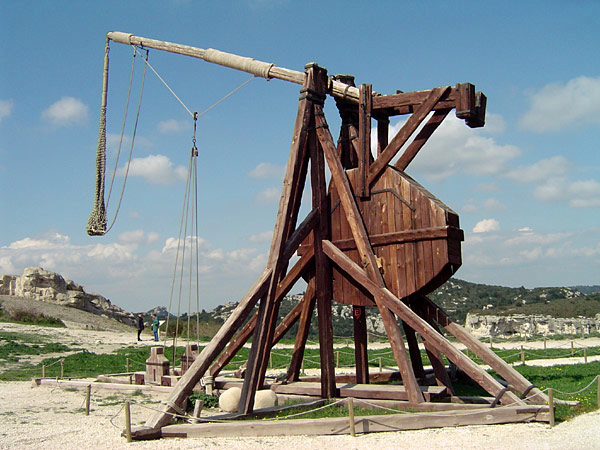|
Siege Of Rheinberg (1586–1590)
The siege of Rheinberg 1586–1590, also known as the capture of Rheinberg of 1590, took place at the strategic Cologne enclave of Rheinberg (present-day North Rhine-Westphalia, Germany), one of the principal crossing-points over the Rhine on the stretch between the Electorate of Cologne and the Dutch border, between 13 August 1586 and 3 February 1590, during the Eighty Years' War, the Cologne War, and the Anglo-Spanish War (1585–1604). After an initial siege in 1586, and a long blocking by the Spanish forces until September 1589, Don Alexander Farnese, Duke of Parma ''( Spanish: Alejandro Farnesio)'', commander-in-chief of the Spanish army, sent a substantial force, under Peter Ernst, Count of Mansfeld, to besiege Rheinberg.Hennes pp.177–179 Despite the efforts by Maarten Schenck van Nydeggen (until his death at the Assault on Nijmegen on 10 August 1589),Brodek pp.400–401 and Sir Francis Vere (from 1590), to relieve the fortress city, the Protestant garrison final ... [...More Info...] [...Related Items...] OR: [Wikipedia] [Google] [Baidu] |
Peter Ernst I Von Mansfeld-Vorderort
Peter Ernst I von Mansfeld-Vorderort (20 July 1517 – 25 May 1604) was a Spanish Imperial army commander of German origin and Governor of the Spanish Netherlands from 1592 to 1594. Born in Heldrungen, Saxony, he was the 11th child (of 16) of Ernest II, Count of Mansfeld-Vorderort. His mother was Ernest II's second wife, Dorothea von Solms-Lich. ''Peter Ernst, Graf von Mansfeld-Friedeburg'' Military career As a young man, Peter Ernst came to the with . He participated in the[...More Info...] [...Related Items...] OR: [Wikipedia] [Google] [Baidu] |
Protestants
Protestantism is a branch of Christianity that emphasizes Justification (theology), justification of sinners Sola fide, through faith alone, the teaching that Salvation in Christianity, salvation comes by unmerited Grace in Christianity, divine grace, the priesthood of all believers, and the Bible as the sole infallible source of authority for Christian faith and practice. The five solae, five ''solae'' summarize the basic theological beliefs of mainstream Protestantism. Protestants follow the theological tenets of the Reformation, Protestant Reformation, a movement that began in the 16th century with the goal of reforming the Catholic Church from perceived Criticism of the Catholic Church, errors, abuses, and discrepancies. The Reformation began in the Holy Roman Empire in 1517, when Martin Luther published his ''Ninety-five Theses'' as a reaction against abuses in the sale of indulgences by the Catholic Church, which purported to offer the remission of the Purgatory, temporal ... [...More Info...] [...Related Items...] OR: [Wikipedia] [Google] [Baidu] |
1590 In The Holy Roman Empire
Year 159 ( CLIX) was a common year starting on Sunday of the Julian calendar. At the time in Roman territories, it was known as the Year of the Consulship of Quintillus and Priscus (or, less frequently, year 912 ''Ab urbe condita''). The denomination 159 for this year has been used since the early medieval period, when the Anno Domini calendar era became the prevalent method in Europe for naming years. Events By place India * In India, the reign of Shivashri Satakarni, as King Satavahana of Andhra, begins. Births * December 30 – Lady Bian, wife of Cao Cao (d. 230) * Annia Aurelia Fadilla, daughter of Marcus Aurelius * Gordian I, Roman emperor (d. 238) * Lu Zhi, Chinese general (d. 192) Deaths * Liang Ji, Chinese general and regent * Liang Nüying Liang Nüying () (died 9 August 159), formally Empress Yixian (懿獻皇后, literally "the meek and wise empress") was an empress during the Eastern Han dynasty. She was Emperor Huan's first wife. Family backg ... [...More Info...] [...Related Items...] OR: [Wikipedia] [Google] [Baidu] |
Sieges Involving England
A siege () . is a military blockade of a city, or fortress, with the intent of conquering by attrition, or by well-prepared assault. Siege warfare (also called siegecrafts or poliorcetics) is a form of constant, low-intensity conflict characterized by one party holding a strong, static, defensive position. Consequently, an opportunity for negotiation between combatants is common, as proximity and fluctuating advantage can encourage diplomacy. A siege occurs when an attacker encounters a city or fortress that cannot be easily taken by a quick assault, and which refuses to surrender. Sieges involve surrounding the target to block provision of supplies and reinforcement or escape of troops (a tactic known as "investment"). This is typically coupled with attempts to reduce the fortifications by means of siege engines, artillery bombardment, mining (also known as sapping), or the use of deception or treachery to bypass defenses. Failing a military outcome, sieges can often be d ... [...More Info...] [...Related Items...] OR: [Wikipedia] [Google] [Baidu] |
Sieges Involving The Dutch Republic
A siege () . is a military blockade of a city, or fortress, with the intent of conquering by attrition, or by well-prepared assault. Siege warfare (also called siegecrafts or poliorcetics) is a form of constant, low-intensity conflict characterized by one party holding a strong, static, defensive position. Consequently, an opportunity for negotiation between combatants is common, as proximity and fluctuating advantage can encourage diplomacy. A siege occurs when an attacker encounters a city or fortress that cannot be easily taken by a quick assault, and which refuses to surrender. Sieges involve surrounding the target to block provision of supplies and reinforcement or escape of troops (a tactic known as "investment"). This is typically coupled with attempts to reduce the fortifications by means of siege engines, artillery bombardment, mining (also known as sapping), or the use of deception or treachery to bypass defenses. Failing a military outcome, sieges can often be deci ... [...More Info...] [...Related Items...] OR: [Wikipedia] [Google] [Baidu] |
List Of Bishops And Archbishops Of Cologne
The Archbishop of Cologne governs the Roman Catholic Archdiocese of Cologne in western North Rhine-Westphalia. Historically, the archbishop was ''ex officio'' one of the prince-electors of the Holy Roman Empire and ruled the Electorate of Cologne. Since the early days of the Catholic Church, there have been 94 bishops and archbishops of Cologne. roue of them resigned n response to impeachment. Eight were coadjutor bishops before they took office. Seven were appointed as coadjutors freely by the pope. One moved to the Curia, where he became a cardinal. Additionally, six were chairmen of the German Bishops' Conference. Cardinal Rainer Woelki has been Archbishop of Cologne since his 2014 transfer from Berlin, where he was also cardinal-archbishop. Bishops and archbishops of Cologne Bishops of Colonia Agrippina, 88–784 All names before Maternus II are to be approached with considerable skepticism, as little contemporary evidence is available. Maternus was present at a c ... [...More Info...] [...Related Items...] OR: [Wikipedia] [Google] [Baidu] |
Destruction Of Neuss
The Destruction of Neuss occurred in July 1586, during the Cologne War. Alexander Farnese, Duke of Parma's troops surrounded the city of Neuss, an important Protestant garrison in the Electorate of Cologne. After the city refused to capitulate, Parma's army reduced the city to rubble through a combination of artillery fire, destructive house-to-house fighting, and plundering; during the battle, a fire started that destroyed most of the rest of the city. Approximately 3,000 civilians died, out of a population of around 4,500, and the entire garrison was killed. Situation in 1586 Neuss had been seized by supporters of the Protestant Prince-Elector Gebhard Truchsess von Waldburg in February 1586. Adolf, Count of Moers and Neuenahr, reinforced and supplied the city and took most of his troops north, to Moers and Venlo, leaving the young Friedrich Cloedt in command of the city. Cloedt had a garrison of 1600 men, mostly Germans and Dutch soldiers; some had military experience, ... [...More Info...] [...Related Items...] OR: [Wikipedia] [Google] [Baidu] |
Siege Of Rheinberg (1598)
A siege () . is a military blockade of a city, or fortress, with the intent of conquering by attrition, or by well-prepared assault. Siege warfare (also called siegecrafts or poliorcetics) is a form of constant, low-intensity conflict characterized by one party holding a strong, static, defensive position. Consequently, an opportunity for negotiation between combatants is common, as proximity and fluctuating advantage can encourage diplomacy. A siege occurs when an attacker encounters a city or fortress that cannot be easily taken by a quick assault, and which refuses to surrender. Sieges involve surrounding the target to block provision of supplies and reinforcement or escape of troops (a tactic known as "investment"). This is typically coupled with attempts to reduce the fortifications by means of siege engines, artillery bombardment, mining (also known as sapping), or the use of deception or treachery to bypass defenses. Failing a military outcome, sieges can often be deci ... [...More Info...] [...Related Items...] OR: [Wikipedia] [Google] [Baidu] |





